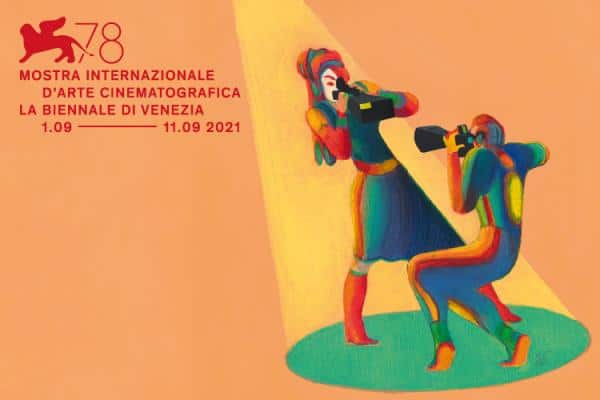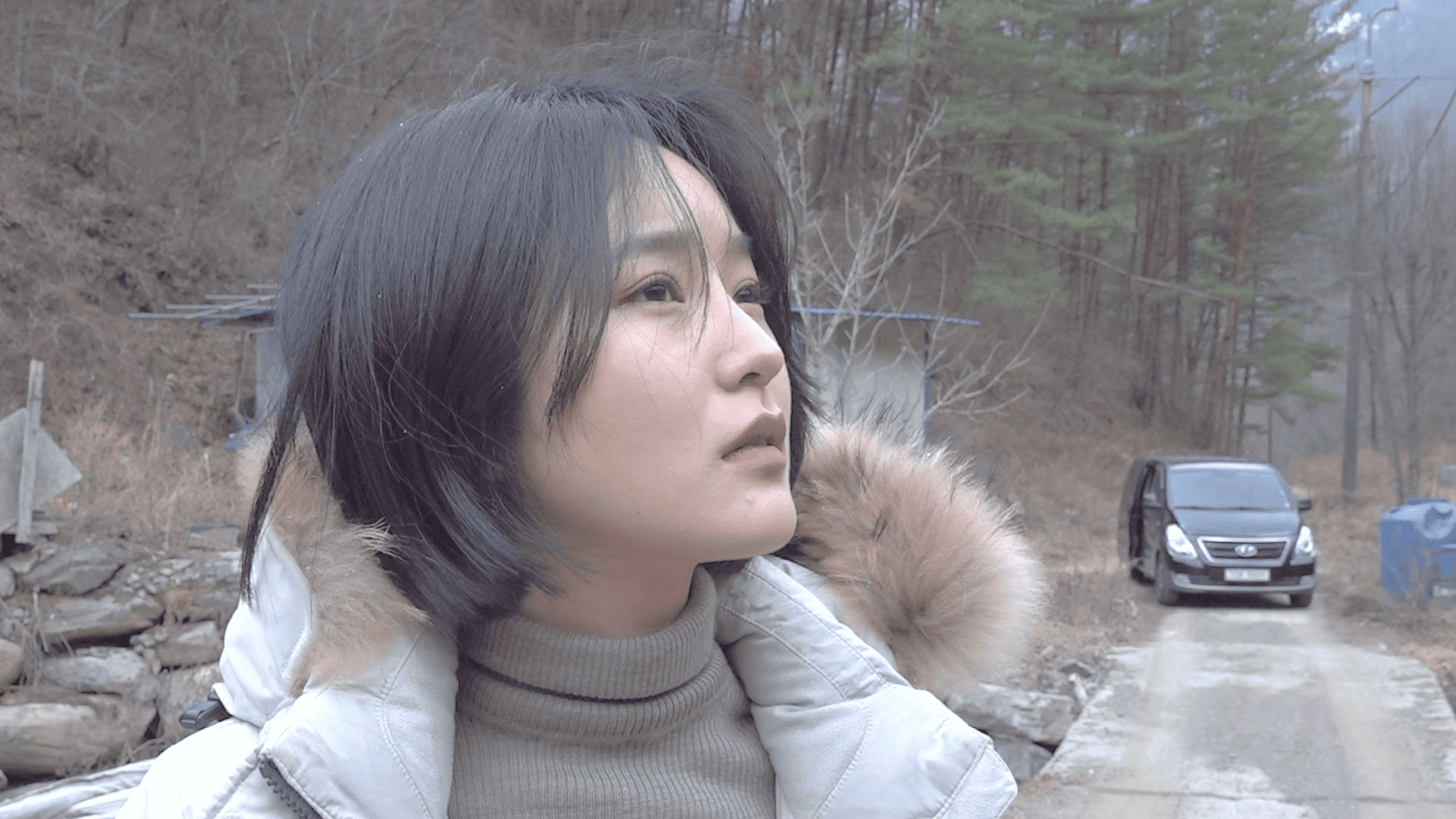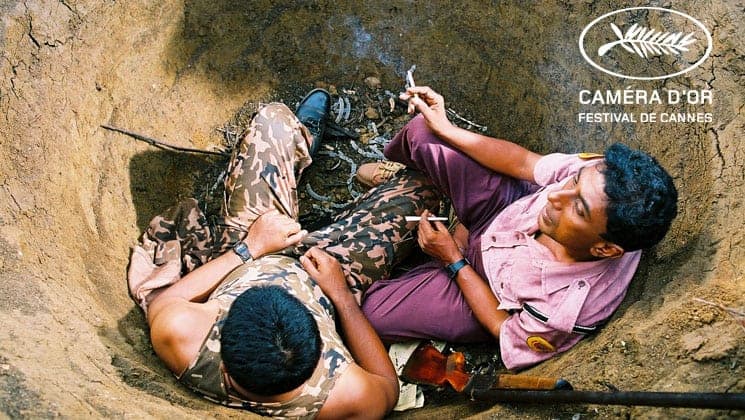Aditya Vikram Sengupta is in Venice with his third feature drama “Once Upon a Time in Calcutta” which runs in the main competition. Back in 2014, he was awarded Best Debut Director for “Labour of Love” (Asha Jaoar Majhe) here in Venice, at the festival he says discovered him and made him a braver filmmaker.
“Once Upon A Time…” is a film completely based on true events, and it tells a couple of interwoven stories that center around one woman and one young man, and their hardships. If there is a bit of a love story involved, this isn't a film about love. It's the common people Sengupta is interested in, and the city he calls his home.
We spoke with Aditya Vikram Sengupta on the day of the film's world premiere.

In the opening credits, it is stated that your film was based on true events, and it would be interesting to know what kind of true events: those related to the scamming of poor people, or is it story behind the leading lady?
Everything that you see in the film is true. Some of the bigger things were reported about in the news, and the others either come from my personal- or my friends' experience. This whole financial scandal was a really big scam, one of the biggest in India through which millions of people lost their money. Some committed suicide, and the rest turned even poorer losing everything. The agents who collected the money went into hiding in villages across India. That was completely inspired by true events, and so was the story about the building collapsing, something that actually happened in West Bengal. I think that four or five buildings collapsed in the past decade, and it kind of became a very natural thing to happen. Ela's story is based on someone whom I know. The astrology TV channel where she works is also real. So, everything that you see comes from real life.
All the locations that you see in the film have been scouted over two years. I have a habit of moving around the city on my own and going to various places and talking to various people. Even the theatre that you see it's real, and the person who lives in it, is just like the character in the film – he lives there alone. Of course his name is not Bubu, but I used to visit him on a number of ocasions. All those places are known to me for over a decade, and they evolved very naturally. It's not like I went there after I wrote the film to pick appropriate venues, but I had them in mind right from the beginning. I look into every corner of the city. I like exploring Calcutta, and discovering new places. That's how I got across all those locations.
It is also important to address that the film is not just inspired by true events, it consists of a number of true events. Nothing is overly dramatized as such.
I guess there was a lot of research needed to pen the script.
There was a lot of research involved, indeed. The newspaper reports gave me just a very basic framework about what I wanted to do and how to shape the characters, but to get into their minds, that required a lot of human research. And that wasn't based on the typical interviews, it was more about spending time with the actual people and observing them day after day.

It's your first collaboration with the Turkish DoP Gökhan Tiryaki. Can you tell us how it came about?
I have been wanting to work with him ever since I watched Nuri Bilge Ceylan's “Three Monkeys”. I contacted him, and he replied. We started talking about many things and we kept in touch. When this film happened, I wanted to explore the city through the people because it is a very character-driven story. Also, since I loved the way Gökhan captured characters with his camera, I thought that he would be ideal to bring out something really fresh on the screen. Actually, I love working with new people, and I feel joy when I am creating something new with someone new.
This is your second time in Venice after “Labour of Love” which brought you the award for the best debut director. What is the feeling being back, this time in the main competition?
It's really, really special because it was the Venice Film festival that discovered me, and it kind of validated me and gave me insurance that what I am doing is probably the right thing. It made me much braver as a filmmaker. When I was invited to compete in the main competiton that was a very special moment. Of course, that was a huge encouregement not just for me but for the whole team. It is absolutely amazing.
This film is not only about social issues, but also a very deep character study. You also show class differences, which become a substantial part of your movie. can you tell us something about that?
Because I explore the city a lot and I interact with everyone, that's what gives me a lot of happiness. What is most fascinating for me is that we all live in the same place, but the spaces we inhabit are very different from each other. It is very interesting when all these people come together, and all the internal worlds interact, which is an inspiring starting point for me. A city is made of its people. It's not about the infrastructure, or the roads and railways, because that is an extension of what these individuals create. Any city is made of people and their mindsets, and I recognized the importance of exploring the entire range of people that makes Calcutta what it is. It is a complexly woven fabric. I needed a well rounded image of it – the full chain and the ecosystem of the city.

The music also plays a significant role for the narrative
I gave Minco Eggersman open hands and he interpreted the film really well. We discussed which part of the film needed music, and then he started scoring. It was a very long, detailed process. Minko was amazing. He was very patient, and attentive to the scenes. Everything he created was in sync with what was happening on the screen – the camera angle, the emotion. It felt that good. That's when we knew that his score was right for the film.
Let's speak about the production design. Every detail falls in its place.
I had a kind of vision for the film. A lot of the locations were scouted based on that vision. We often wouldn't find the exact location that would meet those expectations, and Jonaki Bhattacharya (production designer) would take that physical space and she would transform it into something else. It's been a long, meticulous process, and it took a bit of time: it happened in steps. First, it was about finding the right location,and then deal with the colour palettes, the props and extra details. We made it as it belonged to the film's universe.
You edit your own films. Do you have difficulties in parting with some of the footage you shot?
Fortunately for me, I am a very ruthless editor. I am objective towards my work and I don't shy away from cutting anything. However, saying that, it takes me a lot of time to edit my film. For this one, it costed me almost two years of work. The first version was a little above three hours, and it's the one I imagined at the beginning. It was too long, and it wasn't working. The rhythm was wrong. So, for me it is important – no matter how long the film is- to get it into the rhythm. I enjoy editing, because it enables me to rediscover the film. It is a very positive activity for me to indulge in.
You were lucky enough to shoot the film before the pandemic.
Yes. We shot it in January, February and March 2019. We had a fantastic team and great actors who made this film what it is today.
What is your hope for the film under these special circumstances?
We want to do a festival round which is what our sales agents are working towards. I really strive for a theatrical release in my country, especially in Calcutta, because I feel it's a film that everyone can watch since it'ss made for everyone. I just hope that the Covid situation starts toning down the next year, and that we can all return in the cinemas.
















